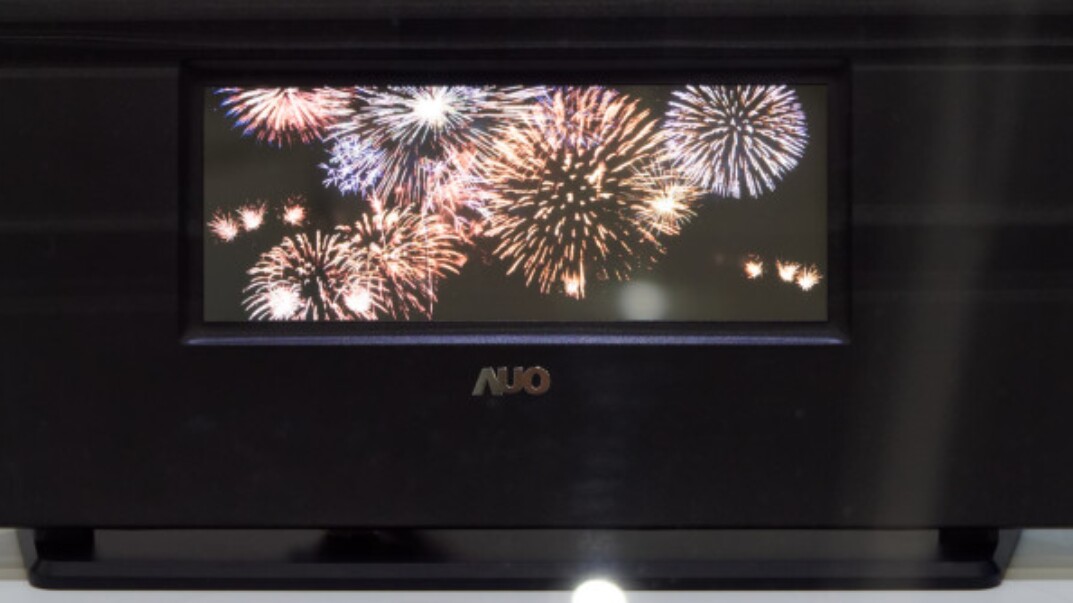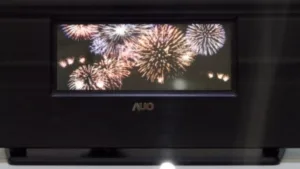From time to time, discussions erupt concerning which display technology is or might be the ultimate one — the universal technology that will make the best displays for all applications.

The closest we’ve come is the venerable and almost universal LCD. In part, this is because LCDs represent many technologies, not one. I used to incorporate a slide in my tutorials that likened LCDs to pasta. “Pasta” is a catch-all that includes linguine, spaghetti, penne, ravioli, and fusilli, just as “LCD” includes reflective, transmissive, TN, IPS, MVA, direct-drive, matrix-drive, local-area back-lit, edge-lit, quantum-dot-enhanced, QDOG, quantum-dot color filter, miniLED back-lit, guest-host, and…well, you get the idea.
With this great variety of approaches, a huge manufacturing infrastructure, decades of developmental expertise, a dense and extensive supply chain, and armies of experienced scientists, engineers, and technicians, it’s no wonder that an acceptable LCD solution can be developed for nearly every application.
I can think of just six application areas where LCDs have serious competition:
- outdoor and some indoor signage, where LEDs and electrophoretic displays are attractive solutions;
- premium smartphones, where OLEDs are the preferred solution;
- high-end TVs, where OLED is a competitor;
- projection, where DMD plays a significant role;
- eReading, where dedicated eReaders using electrophoretic displays take significant market share from (mostly) LCD tablets, and
- electronic shelf labels (ESLs), where electrophoretic is rapidly taking share from LCDs.
But these other technologies have to find their niches, and they then have to fight for them. What keeps these technologies from challenging LCD as the nearly universal solution, at least for now.
 AUO showed this demonstration microLED display at Display Week 2018. It used a pixel-switching backplane and blue microLEDs with quantum-dot color converters. (Photo: MEKO)
AUO showed this demonstration microLED display at Display Week 2018. It used a pixel-switching backplane and blue microLEDs with quantum-dot color converters. (Photo: MEKO)
- Full-color LED displays are power-hungry, very expensive, and, despite significant improvements, still have large pixel pitches.
- OLEDs are nearly the perfect smartphone display despite their 50% price premium over LCDs. The best ones are even readable in sunlight, though with reduced image quality. For TVs, they can not attain the peak brightness of HDR LCDs, although they have better motion rendition and minimal halo effect. But most serious, recent testing has shown that burn-in remains a serious issue for color-by-white OLEDs used in TV applications. This is a problem that many of us thought had been solved for TV applications, though it remained such a problem for signage that indoor OLED signage had been mostly replaced by LCD. Samsung is now energetically developing a TV display using blue OLEDs and quantum-dot color converters for red and green. Blue is the most problematic of the OLED emitters, but some issues will be solved by the fact that all three primaries will age at the same rate. For automotive applications, OLED materials still do not have the required temperature range, but automotive OEMs and suppliers are anxious to use them when this problem is solved.
- Electrophoretic displays are the nearly perfect solution for reading black type on a white background, and their bi-stability and very low power consumption suit them for applications such as outdoor bus-route signs powered by solar cells and ESLs run on button cells. For other applications, image refresh is slow. Three-color is available for ESLs, and expensive — but still slow — full-color is available.
So, are there any technologies on the horizon that could become universal? My favorite is microLEDs fabricated with micro transfer printing; which can be bright, fast, efficient, and contain switching, driving, and even system chips on the display substrate. There is no need for a pixel-switching backplane, so huge, multi-billion-dollar fabs are not needed. We will probably see at least one microLED product at CES, but it will use a microdisplay for a glasses-type display, not a microLED display that is phone, tablet, or TV-sized. Direct-view microLED products larger than a smartwatch are probably three years away.
The other possibility is the true QLED, a display with an OLED-like structure where the organic emitters are replaced with quantum-dot emitters and excited with an electric field instead of photons. Some have considered this the holy grail of display technologies, but it, too, is very much under development.
So the closest we now have to the universal display technology is still LCD. As for anything else, we’re not there yet. – Ken Werner
Ken Werner is Principal of Nutmeg Consultants, specializing in the display industry, manufacturing, technology, and applications, including mobile devices, automotive, and television. He consults for attorneys, investment analysts, and companies re-positioning themselves within the display industry or using displays in their products. He is the 2017 recipient of the Society for Information Display’s Lewis and Beatrice Winner Award. You can reach him at [email protected].

